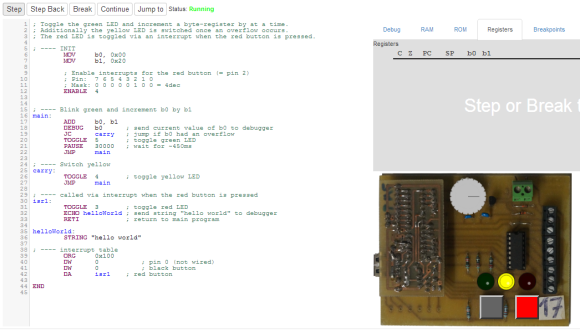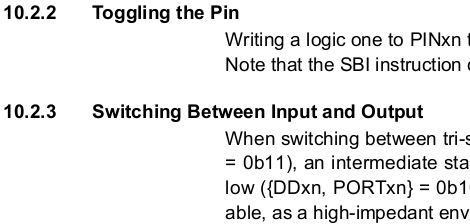 Very few people know assembly. [Luto] seeks to make learning assembly just a little bit easier with his “fully functional web-based assembler development environment, including a real assembler, emulator and debugger.”
Very few people know assembly. [Luto] seeks to make learning assembly just a little bit easier with his “fully functional web-based assembler development environment, including a real assembler, emulator and debugger.”
These days, you can be a microcontroller expert without knowing a thing about assembly. While you don’t NEED to know assembly, it actually can help you understand quite a bit about embedded programming and how your C code actually works. Writing a small part of your code in assembly can reduce code size and speed things up quite a bit. It also can result in some very cool projects, such as using Java to program microcontrollers.
With high quality example code, it is very easy to get started learning assembly. The emulator consists of a microcontroller with 32 registers, hooked up to three LEDs, two buttons, and a potentiometer. This is way better than painfully learning assembly on real hardware. Be sure to check out the online demo! Being able to step through each line of code and clearly see the result help make assembly easier to use and understand. It would be great to see this kind of tool widely adopted in engineering programs.
Have you used assembly in any of your projects? Let us know how it went and why you choose to use assembly












